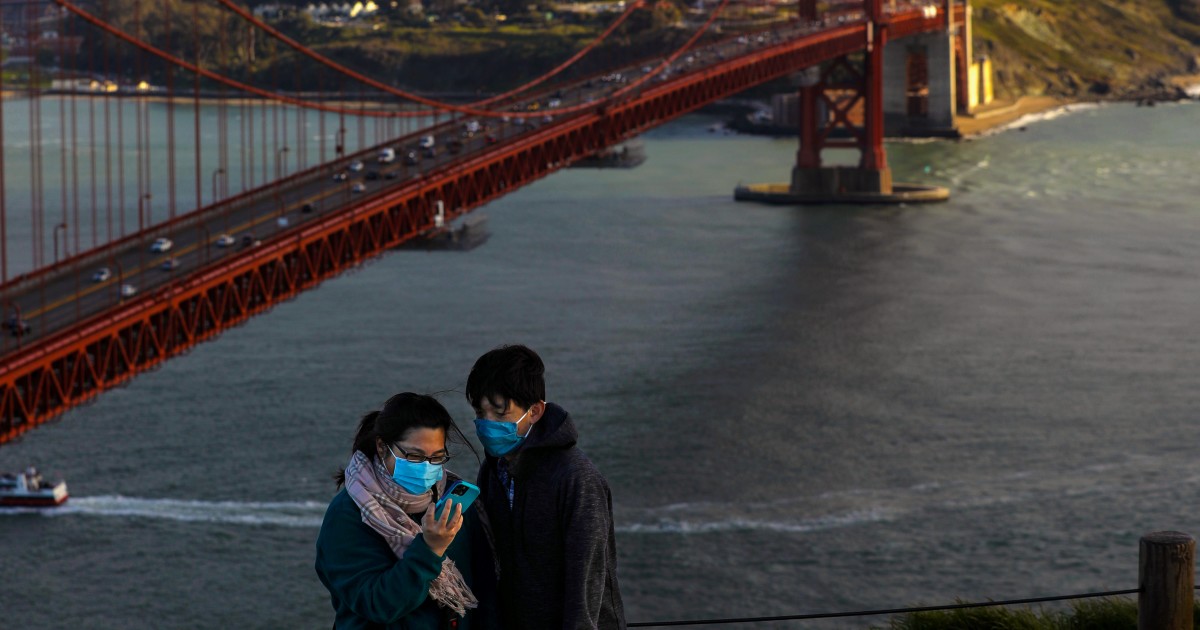San Francisco is nearing herd immunity, some experts believe, a milestone in California’s efforts to gain control of the COVID-19 pandemic.
San Francisco has one of California’s highest rates of vaccination, with 72% of residents having received at least one dose. Only one other county in California — Marin, just north of San Francisco — has a higher rate of vaccination, with 75% of residents there at least partially vaccinated. Both San Francisco and Marin County’s rates are significantly higher than the statewide vaccination rate of 56%.
Herd immunity, also known as community immunity, is a a form of indirectly protecting people without immunity to a disease from an infection. It occurs when a significant percentage of the overall population is immune either through vaccines or from surviving a previous infection.
There is no definitive percentage at which herd immunity to COVID-19 is achieved. It can only be tested when essentially all restrictions are loosened, and officials observe whether disease transmission increases.
Previous guesses for when herd immunity is achieved to COVID-19 has been between 70% to 85% of a community with immunity, either through immunization or through surviving the disease. Despite the hazy parameters around reaching herd immunity, getting closer to it by maximizing vaccination rates remains a paramount goal for public health experts.
“I think San Francisco is pretty close,” said UC San Francisco epidemiologist Dr. George Rutherford, who thinks a good guess for a threshold to achieve herd immunity is north of 75%. “I think we’re in really good shape here, here meaning the city [of San Francisco]. Other places, we’re plenty close.”
San Diego County also has one of the state’s highest vaccination rates, with nearly 70% of its residents vaccinated with at least one dose. Orange and Ventura counties have 57% of their residents at least partially vaccinated; L.A. County, 55%; Sacramento County, 51%; Riverside County, 45%; and San Bernardino County, 41%.
L.A. County Public Health Director Barbara Ferrer said she did not believe L.A. County has achieved herd immunity yet; she is hoping it will get there by the end of the summer.
“We have a lot of people not vaccinated still,” Ferrer said. Achieving herd immunity would mean that daily coronavirus case rates will have fallen so low “that you’ve got a lot of protection just because we have so many people vaccinated.”
Nothing suddenly happens when herd immunity is achieved — daily coronavirus case rates are already at extraordinarily low numbers in San Francisco. And technically, herd immunity is achieved gradually: The more people that gain immunity, the slower the rate of disease transmission.
But once herd immunity is achieved, as new coronavirus cases are introduced among unvaccinated people, such as through travelers, “they’re very unlikely to be propagated more than a generation or something. So you’re not going to see these prolonged chains of transmission,” assuming that unvaccinated people are randomly distributed in the population and aren’t all congregating together.
Some experts have expressed confidence that California will not backslide into a worse phase of the pandemic after June 15, when the state is set to fully reopen its economy and lift the lion’s share of business restrictions aimed at curbing the spread of the coronavirus, which have kept, in California counties in the least restrictive tier, indoor restaurants and gyms at 50% of indoor capacity.
“We will see on June 15 If we stay at low cases — I actually have no doubt that we will,” said Dr. Monica Gandhi, a UC San Francisco infectious diseases specialist.
California is already recording extraordinarily low COVID-19 hospitalization rates — there are roughly about 1,000 people with COVID-19 in hospitals in the state, down from about 22,000 in January. The latest numbers translate to a hospitalization rate of about 2.6 Californians hospitalized with COVID-19 for every 100,000 residents, down from a peak of 56 per 100,000 residents.
The latest number is significant, because Gandhi suggested in April that a good milestone for when restrictions like masking and social distancing can ease is when hospitalization numbers fall below 5 for every 100,000 residents. During the peak of the flu season, hospitalization rates for the flu on average top out at about 20 to 40 per 100,000 residents.
Other countries with the world’s fastest per capita vaccine administrations show promising patterns. Israel recently ended rules that restricted unvaccinated people from entering certain venues, Gandhi said.
On Tuesday, federal officials expressed concern about the rise of the Delta variant, also known as B.1.617.2, which was originally identified in India and has spread in 60 countries, including the U.S. and United Kingdom.
Dr. Anthony Fauci, the U.S. government’s top infectious diseases expert, said the Delta variant is more transmissible than the Alpha variant, also known as B.1.1.7, which originally identified in the U.K. and which has since become dominant in the U.S. “It may be associated with an increased disease severity, such as hospitalization risk, compared to Alpha,” he said.
But luckily, studies show that two doses of the Pfizer and AstraZeneca vaccines provide sufficient immunity to protect against infection by the Delta variant, Fauci said. AstraZeneca’s COVID-19 vaccine is not authorized for use in the U.S., but is similar to the one manufactured by Johnson & Johnson.



















